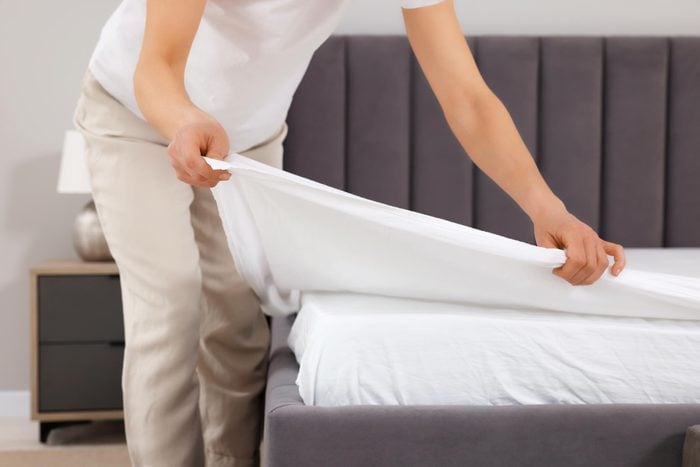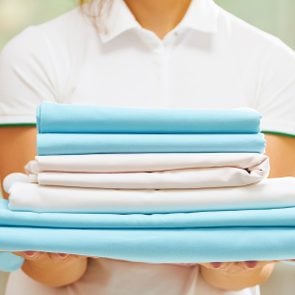Do You Really Need a Top Sheet on Your Bed? Experts Settle the Debate
Updated: Mar. 20, 2024

Are you Team Top Sheet, or Team No Top Sheet Needed?
Our editors and experts handpick every product we feature. We may earn a commission from your purchases.
Another day, another internet debate. Did you see the blue or the gold dress? Do you dust or vacuum first? And today’s riveting entry: Team top sheet or no top sheet?
Yes, we’re talking about bed linens. Do you love snuggling under a fluffy, washable duvet? Or do you prefer layers of sheets and blankets that look great and are easy to swap out depending on the season?
Top sheets go back millennia. They’re easy to wash, dry and fold, and they’re versatile too, often pulling double duty as a bottom sheet. (The next time you’re in a hotel, check out the bottom sheet on your bed. It’s likely a top sheet folded under the mattress.)
So where do you come down? Let’s look at the pros and cons, according to a sleep expert.
What is a top sheet?
Top sheets go underneath your blanket, comforter or duvet (and on top of you, while you’re in the bed).
“Top sheets—also called flat sheets—are typically sold as part of a bedding set in the United States,” says Sleep Foundation product expert Tom Ryan, PhD. “The idea is that a top sheet acts as a protective barrier between you and your comforter or duvet, to keep it cleaner and more hygienic.”
When it’s time to do laundry, top sheets save you from washing the comforter every time you strip your bed. But do you need one? “It’s all a matter of personal preference, of course,” Ryan says. Let’s present the evidence.
Team top sheet
Are you a top sheet user? If so, you’re in good company. Mattress company Casper says 58% of Americans like top sheets, with older sleepers more attached than younger.
Why would top sheets reign? A few reasons:
- Comfort. “You might want to sleep with a top sheet and a light blanket in the warmer months, or if you live in a warm or humid climate,” Ryan says. Who doesn’t love sliding between crisp, smooth sheets, especially during the dog days of a triple-digit Texas summer?
- Aesthetics. “If you like the look of a layered bed,” Ryan says, “a top sheet adds a nice visual touch if you fold it back.” Of course, coverlets and cheery blankets and soft, fluffy duvets can be just as attractive, but we’re conditioned by beds with a peek of fresh sheet up top.
- The ick factor. Mattress company Amerisleep commissioned a study on germy sheets. Germophobes, beware: Sheets have 25,000 times more bacteria than the bathroom door knob, and that’s after just one week of use! Tossing a top sheet in the wash with the rest of the linens is an easy way to combat those germs.
No top sheet needed
Despite the evidence so generously presented above, “I’m firmly in the camp of Team No Top Sheet,” Ryan says. “I stopped using a top sheet several years ago, and I appreciate the simplicity of my bed.”
Making the bed takes no time at all—just hop out and draw up the duvet. “If I shift or move around at night, I don’t feel like I’m getting twisted in extra fabric,” Ryan says.
Sleepers across the pond threw off the tyranny of the top sheet eons ago, when the duvet became popular across the continent. “Using a top sheet is uncommon in places like Europe,” Ryan says. As noted in the Casper study, many Americans are getting rid of the flat sheet too. Ryan says the numbers are “mostly driven by younger people ditching the top sheet altogether.”
But what about the germs? Well, just as you would wash your sheets, you need to wash the duvet cover or blanket that you’re using against your body.
“[A]s long as you have a duvet cover or a comforter that you can wash weekly or every other week,” Ryan says, “a top sheet isn’t really necessary.”
About the expert
- Tom Ryan, PhD, is director of product testing for Sleep Foundation, working with the testing team to gather feedback on sleep products.
Sources:
- Casper: “Putting the Top Sheet Debate to Bed”
- Early Bird by Amerisleep: “Bacteria in Your Bed”



